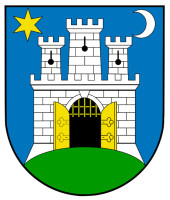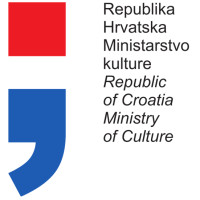Category: Events
Helena Klakočar
MOHA IN TRITON
September 12 – 23, 2018
PM Gallery

MOHA IN TRITON solo exhibition of Helena Klakočar opens on Wednesday, September 12, 2018 at 8pm at the PM Gallery of the Home of the Croatian Association of Artists.
Helena Klakočar’s graphic novels are primarily based on honesty, warmth, intellectual wisdom and social engagement for a better and fairer world. At the same time, she is unobtrusive: she does not boast with images or words. Her works are intellectual and lyrical and engagement is woven into a poetic and humane reflection of the world, on the brink between a contemporary fairy tale and harsh existential reality.
Her latest project, MEDITERRANEAN WALL, is characterized by a simple and unpretentious empathy, poetry and humanity that cut right to the heart of the matter.
If there is anyone who should speak on behalf of people forced by war from their centuries-old homes it is Helena Klakočar and her contemporary style, expressed in a warm and humane manner through the new and growing avant-garde medium of diary-like graphic novel.
Her well-balanced style and texts that go beyond doctrines and politicking are positioned in a true area of artistic creativity, expressed in a mass, widely popular, read and watched picture book medium.
Text author: MSc Branka Hlevnjak, Art Historian
The project “BŠ – 72 Andrija Mohorovičić“, within which the graphic novel MEDITERRANEAN WALL was created, was funded by the Ministry of Culture of the Republic of Croatia.
Helena Klakočar – artist statement
Suported by:


GALLERIES OPENING HOURS
Wednesday to Friday: 11.00 AM – 7.00 PM
Saturday and Sunday: 10.00 AM – 18.00 PM
Closed on Mondays, Tuesdays and holidays
Dom HDLU
Trg žrtava fašizma 16
10000 Zagreb
Glorija Lizde
F 20.5
PM Gallery
September 4 – 9, 2018

When presenting the history of a family, the photographic medium is very often, because of its skilful flirting with documentarism, perceived as a testimony of time. At the same time, the element of a positive self-presentation on depictions of moments of staged family idyll is being (inadvertently) disregarded.
This is precisely the starting point for artist Glorija Lizde’s reflections. She asks herself
whether it is possible to retrospectively examine difficult, repressed and unrecorded fragments of time related to a certain family. However, before plunging into past moments, the author carries out extensive research on her father’s illness, which marked the growing up of his three daughters. The illness is referred to as F20.5, a cold medical code for residual schizophrenia.
After that, she places the same three female protagonists into staged reinterpretations of father’s hallucinations, which, by taking on performative character, have a therapeutic effect on places of repressed family memories. In so doing, the artist uses the capacity of photography for resemantization of thinned memories, and she divides the final series into three segments: unified portraits of the three sisters and performances of father’s
hallucinations which intertwine with depictions of still life. Thus she expands the story about father’s inner antagonisms through other family members who are determined by them, at the same time synthesizing multiple views of “one reality”.
We recognize duality, as a guiding principle in the art process, in the dichotomy between dynamic and calming, achieved by interaction between light and shadow; by emphasizing clear, sharp colours with inscribed symbolism (such as red which is associated with life-death, love-war dualities); repeating geometrized motifs; while on the other hand calming landscapes hint at the final state of mental order, closing the circle.
Duality is also present on the conceptual level because the artist uses photography as a tool for introspection but at the same time, she skilfully plays with it in representation, by
manipulating framing, omitting content, alternating subjects and clear context, which results in the loss of connection between hallucination and interpretation. This creates a fertile ground for inscribing different meanings. Therefore, she translates the feeling of apparent closeness and almost voyeuristic prying into the intimacy of a family, exposed on gallery walls, into the structures of some other, more universal reality, which requires facing the past for a better present.
Suported by:

TIHOMIR MATIJEVIĆ
PLATO WATCHES THE SIMPSONS
Karas Gallery
September 4 – September 16, 2018

Opening of the exhibition: Tuesday, September 4 at 7pm at the Karas Gallery
Exhibition Plato Watches the Simpsons, by Tihomir Matijević will be opened on Tuesday, September 4 at 7pm at the Karas Gallery (Zvonimirova 58).
“(…) Mourning for the lost “spiritual model“ is also increasingly visible in visual arts, and thus the Osijek-based sculptor Tihomir Matijević, in his work indicatively titled “Plato Watches the Simpsons“, reached for the global model of cartoon-behaviourism in which the memory of the days of belonging to someone and something still seems alive. It is an installation consisting of a white polyester sculpture (family portrait od The Simpsons), wooden construction as a simulation of a family home and scattered (edible) popcorn on the floor of specified space (the popcorn itself could be a great representation of ravenous gulping of cognitive snacks that do not fill the human void, or in Wittgenstein’s words – they represent the impossibility to technically solve fundamental life problems).
(…) Behind the mask of pseudo portraying, the strong indication of Memento Mori construction could not remain hidden. Since the animations as models simply do not have their own internalities or personal secrets, they could not be turned into portraits. (True portraits require a reciprocal “transfer of internalities“ between persons open in their freedom)[1]. However, the (non-)mastering of subconscious or unconscious projections of one’s own internality into inanimate things (animated Simpsons) could surely achieve what we call the artist’s self-portrait, so if Plato is truly “watching“ someone in the describes installation, it is the artist Tihomir Matijević.”
From preface, written by Zlatko Kozina
[1] Schillebeeckx, Edward. H. Krist, sakremenat susreta s Bogom [Christ the Sacrament of the Encounter With God]. Zagreb. Kršćanska sadašnjost, 1992, p.5.
![]()

Supported by:

The Karas Gallery program is also realized with the financial support of the Croatian Association of Fine Artists (HDLU).
Working hours:
Wednesday and Friday: 9am to 3pm | Thursday: 3pm to 7pm | Saturday and Sunday: 9am to 12am
Mondays, Tuesdays and holidays: closed.
The exhibition will remain open until September 16, 2018
Igor Lekšić
DRAWINGS
July 17 -22, 2018.
PM Gallery

DRAWINGS solo exhibition of Igor Lekšić opens on Tuesday, July 17, 2018 at 8pm at the PM Gallery of the Home of the Croatian Association of Artists.
Igor Lekšić’s drawings on paper draw on the long tradition and continuity of the development of geometric abstraction in the history of visual arts, from Malevich’s Suprematism, Mondrian’s neoplasticism, Theo van Doesburg, Max Bill, Victor Vasarely, Richard Paul Lohse, all the way to Croatian artists gathered around the Exat 51 group, especially Ivan Picelj, as well as Juraj Dobrović, Julije Knifer and others.
Over the years, Lekšić has experimented with various forms of geometric abstraction; ranging from monochrome geometric solids in space to an earlier series of drawings of modular structures, of pronounced colours and smaller dimensions, from which the exhibited Drawings emerged. The exhibition features works of larger dimensions created between 2016 and 2018. The artist does not give names to individual works, but unifies them under a common name of Drawings, by which he emphasizes their nature and drawing medium. He created them by meticulously drawing horizontal and vertical line strokes using fluorescent felt tip pens (marker pens) on paper, in a precise scale and relationships, and at regular intervals, following an organized spatial-raster grid. A uniform pressure of the pen on the paper and suggestion of perfectionism of machine printing resulted in the absence of any narration, description and subjectivity in the work. Closed construction prevents any verbal involvement with the visual structure of the work, the result of which is silence. Long ago, this was defined by the American theorist Rosalind E. Krauss in her analysis of the notion of structural grid (Malevich, Mondrian).
What is important for Igor Lekšić’s geometric abstraction is the artist’s authentic methodological approach where the issue of elaboration of a visual image refers to the structural composition of the grid. The artist bases his theory of geometric abstraction on the idea of using mathematically elaborate method by which he explores the differences between the resulting permutations. Drawings arise from a pre-defined working methodology, whereas the basic idea is the existence of a non-exhaustive number of visual changes arising from a pre-defined and controlled implementation process.
There are two basic and central ideas to constructing the form. First, there is a previously elaborated, mathematically precise, rhythmically structured framework, which functions as a structural and optical unit. The exactness of Drawings arises from the predefined parameters of the grid, which are repeated from drawing to drawing like a matrix, replicating the same pattern of spatial grid. On the other hand, the optical shift is emphasized by the choice and change of colours. In terms of composition, each drawing is divided into three horizontal segments in which the parts of transparent rectangular structural grid differ in colour, luminosity and density of linear strokes. At the same time these segments are the central bearers of optical perceptive relations. When referring to his work, the artist emphasizes his concentration on performance, as well as precision that excludes spontaneity and chance, especially because “paper“ does not tolerate “mistakes and corrections“.
Nadežda Elezović


GALLERIES OPENING HOURS
Wednesday to Friday: 11.00 AM – 7.00 PM
Saturday and Sunday: 10.00 AM – 18.00 PM
Closed on Mondays, Tuesdays and holidays
Dom HDLU
Trg žrtava fašizma 16
10000 Zagreb












